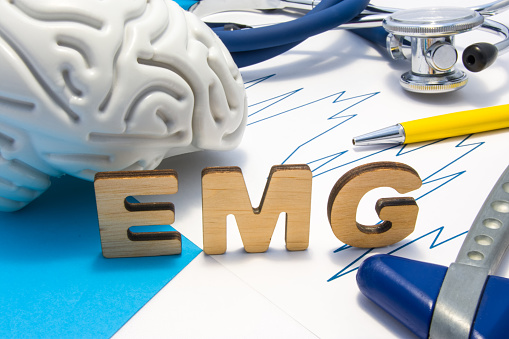What is an EMG Test done by a Neurologist?

• Continuous pain in the arms, feet, hands, and legs.
• Muscle wasting
• Loss of control of fine motor
• Tingling, paralysis, or numbness in the limbs
• Chewing, speaking, or swallowing difficulty
• Muscle stiffness or weakness
• Cramping, twitching, or spasms The EMG test is mostly done alongside Nerve Conduction Velocity (NCV) test. Both provide a more accurate result on which muscle or nerve is affected.
Reasons EMG Test is done by a Neurologist
It is done to eliminate the possibility that certain conditions are present. The conditions are listed below.
• Disorders that affect the nerve’s root, like herniated disk in the spine.
• Disorders such as myasthenia gravis that jeopardize the muscle and nerve connection.
• A disorder like polio or amyotrophic lateral sclerosis that affect the nerves in the spinal cord or the brain
• Muscle disorders including polymyositis or dystrophy
• Disorders that affect the outside of the spinal cord, such as peripheral neuropathies or carpal tunnel syndrome.
Results of the EMG Test
The results depict different things. If the test detects small electrical activity while the muscles are relaxed, that is a sign that they are healthy. However, if there is an activity, it can be due to the following disorders.
• Carpal Tunnel Syndrome
• Neuropathy
• Myositis
If the activity is random and sporadic, it may designate any of the three conditions below:
2. Carpal tunnel syndrome
3. Amyotrophic lateral sclerosis
How to Prepare for the Test
For the test to be successful, the patient should be well prepared. It does not happen randomly from anywhere. So, what should a patient do?
- First, they must inform the neurologist whether they have taken any over-the-counter medications or have a bleeding problem. If they have a cardiac defibrillator, they should also say early enough.
- Secondly, they should bathe some hours before the test to eliminate excess oil from the skin.
- Thirdly, they should avoid applying any body lotion some days to the test.
- Fourth, they should dress in a comfortable outfit during the test.
- Finally, remove anything metallic they may be wearing, such as watches and jewelry.
Risks
The EMG test done by a neurologist is safe. However, it is not entirely free of risks. Some of the side effects that a patient may experience include the following.
1. Muscle pain during or after the procedure. It can go away after some time, or the patient can take pain relievers.
2. Swelling of soft tissues. This side effect rarely occurs. The same also applies to a skin infection that may occur after a needle EMG test.
Contact Dr. Jeff Steinberg For more help
Dr. Jeff Steinberg is an expert Neurologist Fort Lauderdale with years of experience in the chiropractor medical industry. Contact us at 954-900-6699 for more information.

